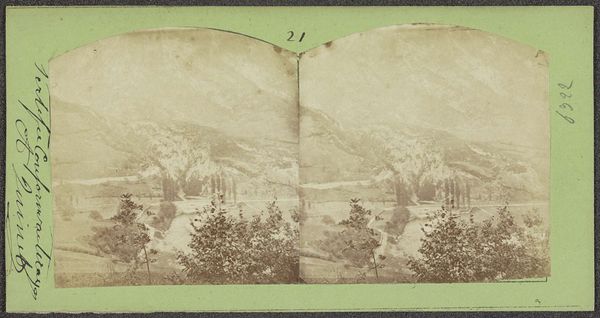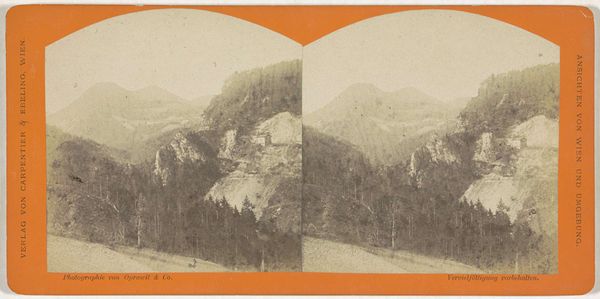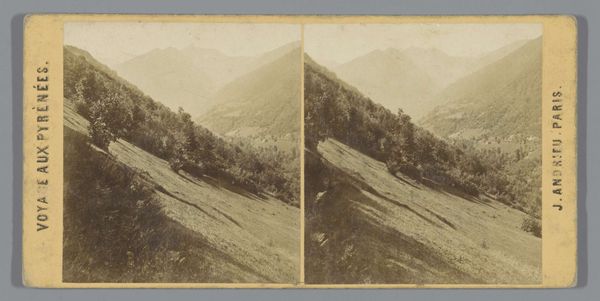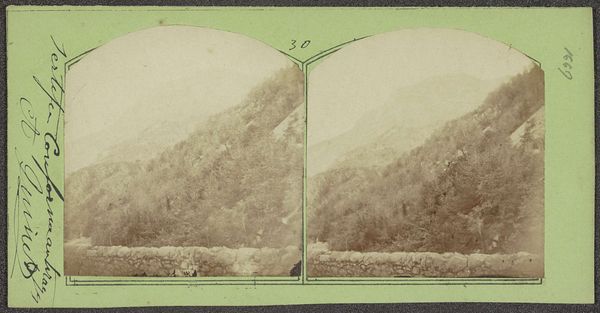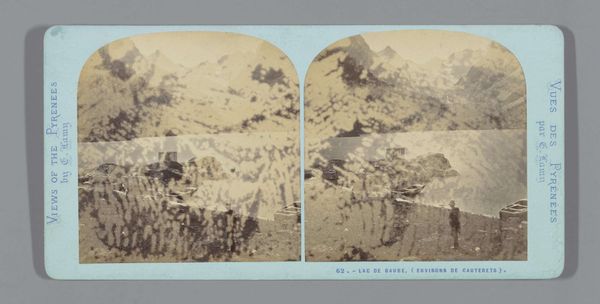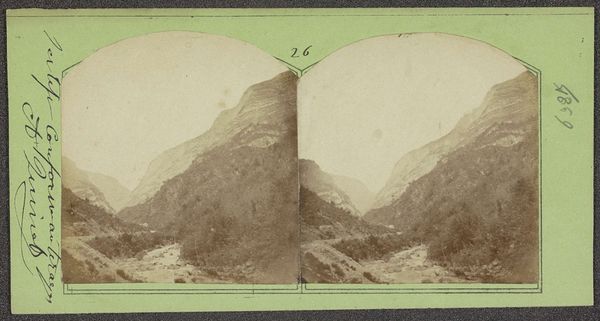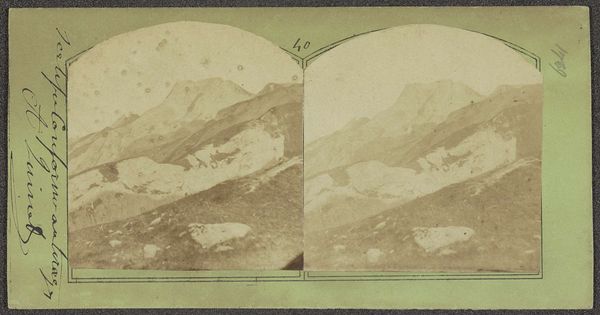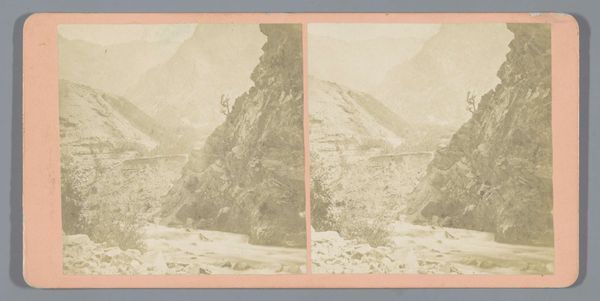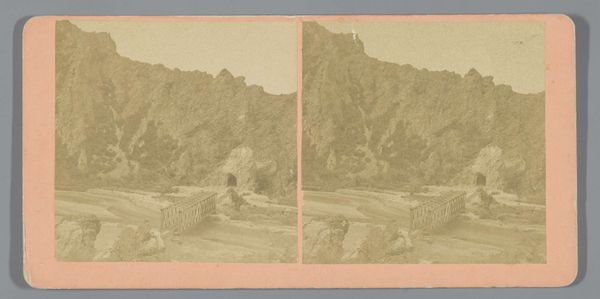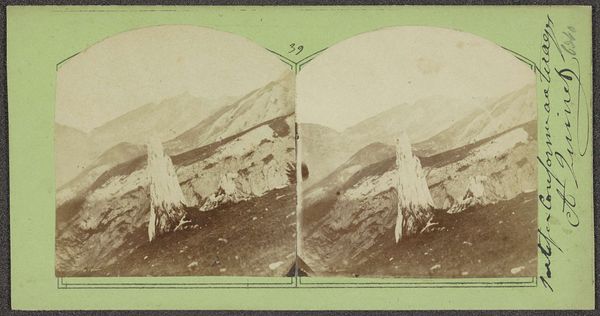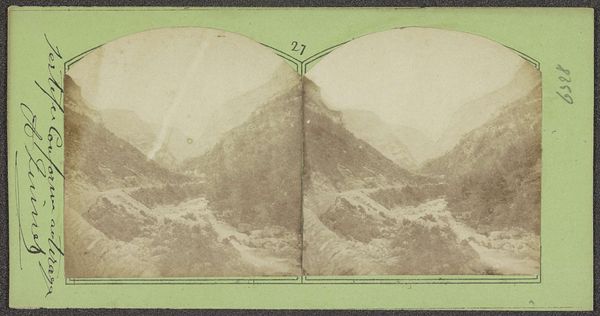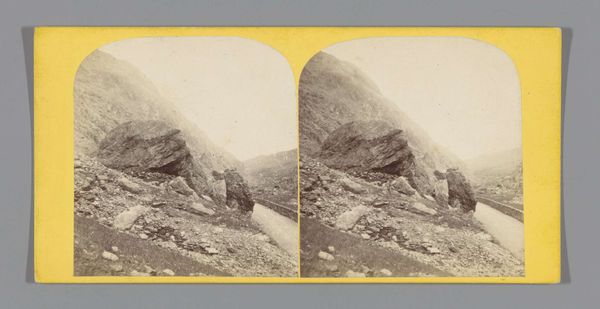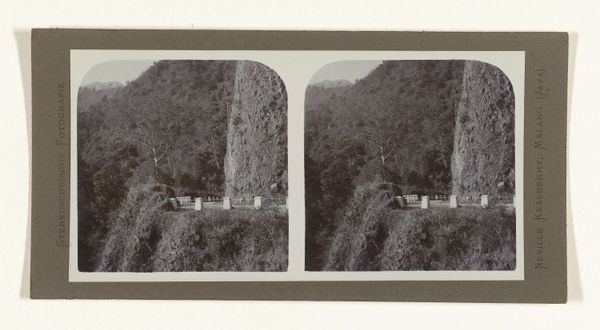
Dimensions: height 85 mm, width 177 mm
Copyright: Rijks Museum: Open Domain
Editor: This is a photograph entitled "Monument voor Friedrich August Eschen in Servoz, Frankrijk," taken sometime between 1860 and 1866. It shows a solitary figure near a monument, set against the dramatic backdrop of the Alps. The mood is contemplative, almost mournful. What sociopolitical commentary do you think this landscape invites? Curator: That’s a perceptive reading. Beyond the aesthetic appreciation of the Romantic landscape, this photograph subtly intersects with questions of class and access to nature in the mid-19th century. Who could afford to travel to the Alps? Who were these monuments for, and who was being memorialized, and crucially, who *wasn't*? Consider also that early photography like this one, was often used to promote colonial ambitions, exoticising locations for Western viewers. Do you think this photograph perpetuates that power dynamic, or potentially challenges it? Editor: That's a great point! The lone figure seems quite small compared to the monument and the mountains. So the monument is a celebration of an individual, not necessarily something universal. I hadn't thought about the power dynamic of who gets to be remembered. Curator: Exactly. Now think about what other kinds of "monuments" exist, both celebrated and ignored. Whose stories don’t we see represented in this visual narrative? And how does that relate to similar power structures today, influencing who has a voice in our society? Editor: This really shifts my perspective. I now see the landscape less as a purely aesthetic vista and more as a stage upon which social inequalities are silently enacted and perpetuated. Curator: Indeed. It’s a reminder that even the most seemingly straightforward images can offer rich insight into the historical and cultural forces shaping our world. By looking closely, we reveal not only the monument but its role in constructing a particular kind of cultural memory. Editor: I'll definitely look at other landscapes differently now, thinking about whose stories are present, and crucially, whose are absent. Thanks!
Comments
No comments
Be the first to comment and join the conversation on the ultimate creative platform.
